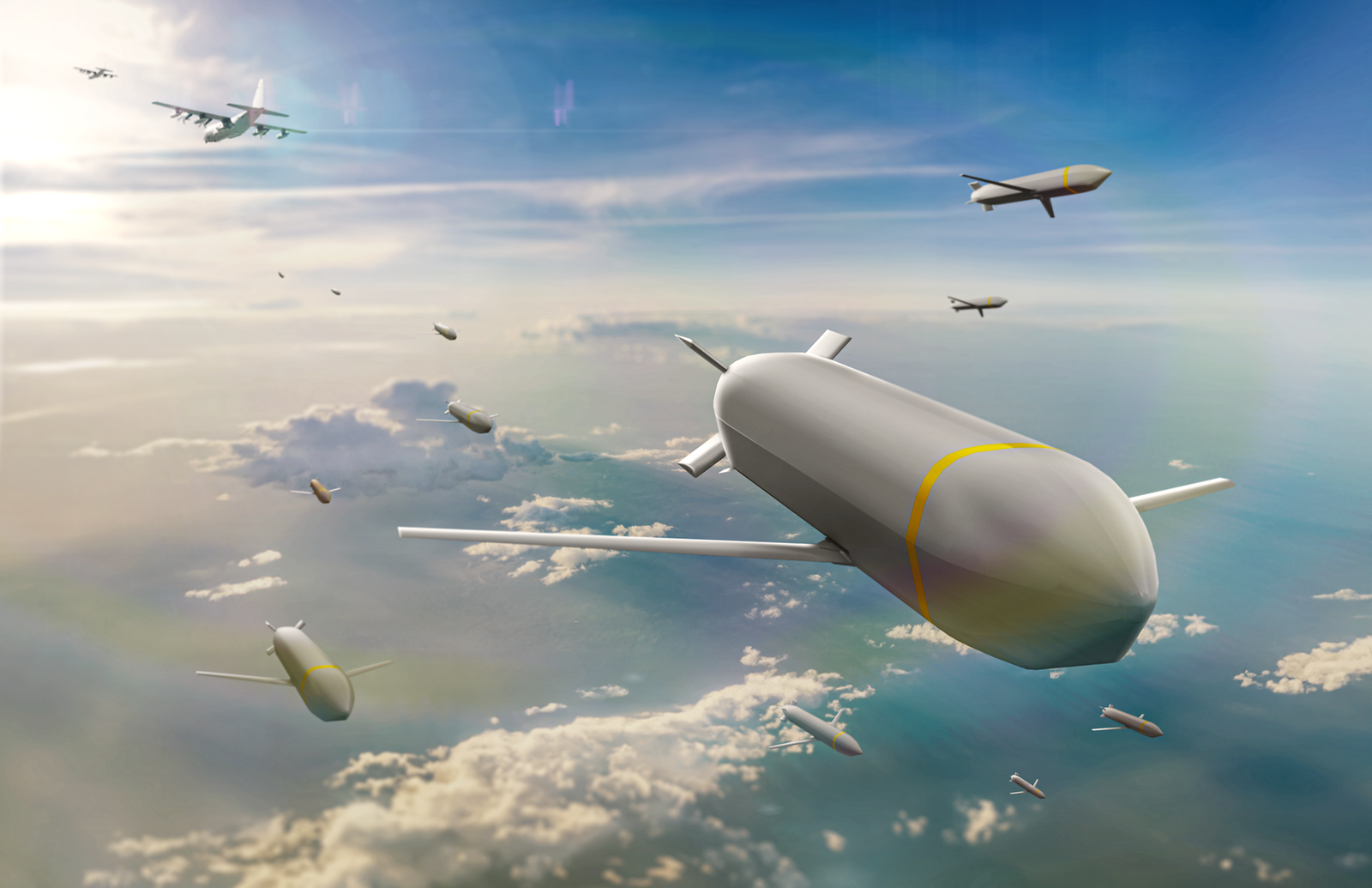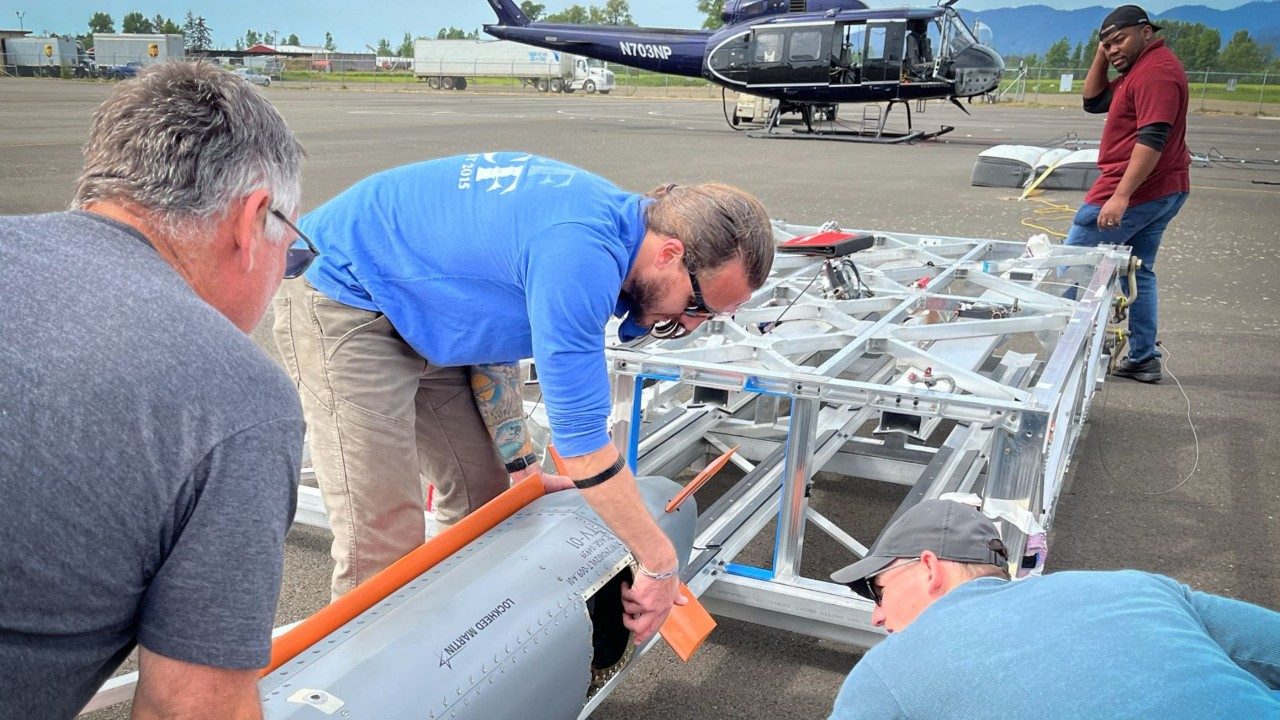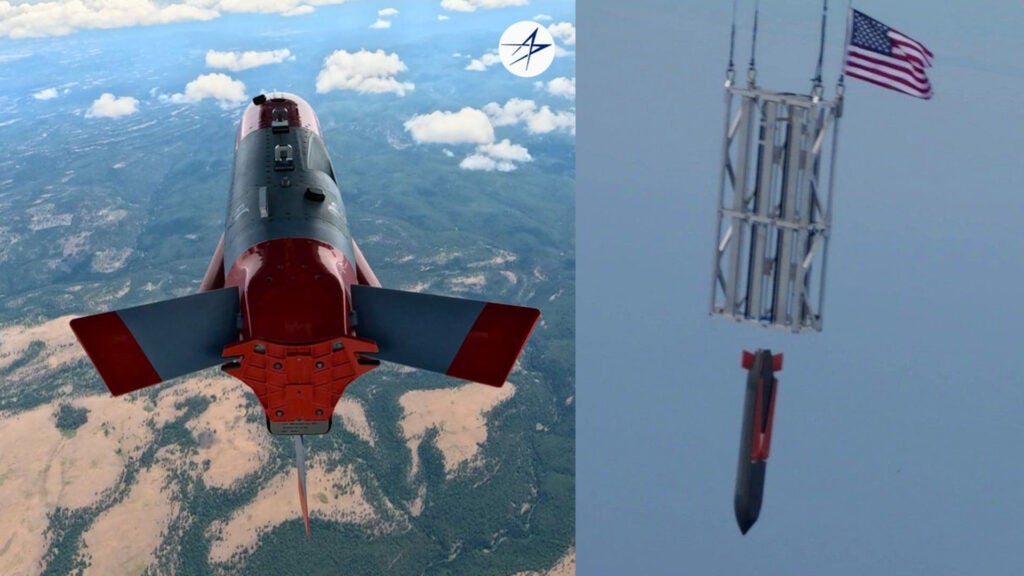CMMT Cruise Missile Flight Tested in Multiple Configurations
On July 16, Lockheed Martin announced it had successfully flight tested two variants of its Common Multi-Mission Truck (CMMT). The CMMT is a modular family of air vehicles intended to dramatically reduce the cost and development time of cruise missiles, advanced decoys, and small ISR aircraft.

The first variant tested was CMMT-D which flew in May of this year. This compact cruise missile is intended for deployment from Lockheed Martin’s Rapid Dragon launch system which allows for cargo aircraft like the C-17 and C-130 to perform the mission of bombers. Unlike traditional bombers which deploy cruise missiles from rotary launchers and pylons the Rapid Dragon is a cradle that is ejected from the aircraft and then descends slowly via parachute before releasing its payload nose first. Having been configured specifically for this deployment method CMMT-D is able to avoid needing the complex structures and hardpoints for traditional pylon mounting on a rotary launcher. This results in a simpler and cheaper missile that can be produced in large quantities that take advantage of the increased volley size permitted by Rapid Dragon.

The test was very developmental, involving a CMMT-D without an engine and used a helicopter to replicate the parachute conditions. Despite this simplicity the test sufficiently emulated real deployment since Rapid Dragon has already been proven in all-up tests using live JASSM cruise missiles, notably during an exercise in Norway back in November 2022.

The second variant tested was CMMT-X which is a smaller variant designed for employment from pylons. The test, which took place in June, involved deploying CMMT-X from a Piper Navajo and, unlike the Dragon test, included powering up an onboard engine. Deploying from such a light aircraft (weighing less than a quarter of an F-16 empty) demonstrated incredible flexibility and opens the opportunity for employment from Unmanned Aerial Systems like the MQ-9 or future Collaborative Combat Aircraft.
The goal of CMMT to reduce development time was proven by CMMT-D going from concept to glide testing in only 10 months. CMMT-X was developed in 7 months although it was derived from Lockheed Martin’s SPEED RACER platform which has been in development since 2020. As of writing the CMMT remains an internally funded project that Lockheed Martin expects to attract interest from US and allied forces who are looking to expand cruise missile inventories without massive financial expenditures.

